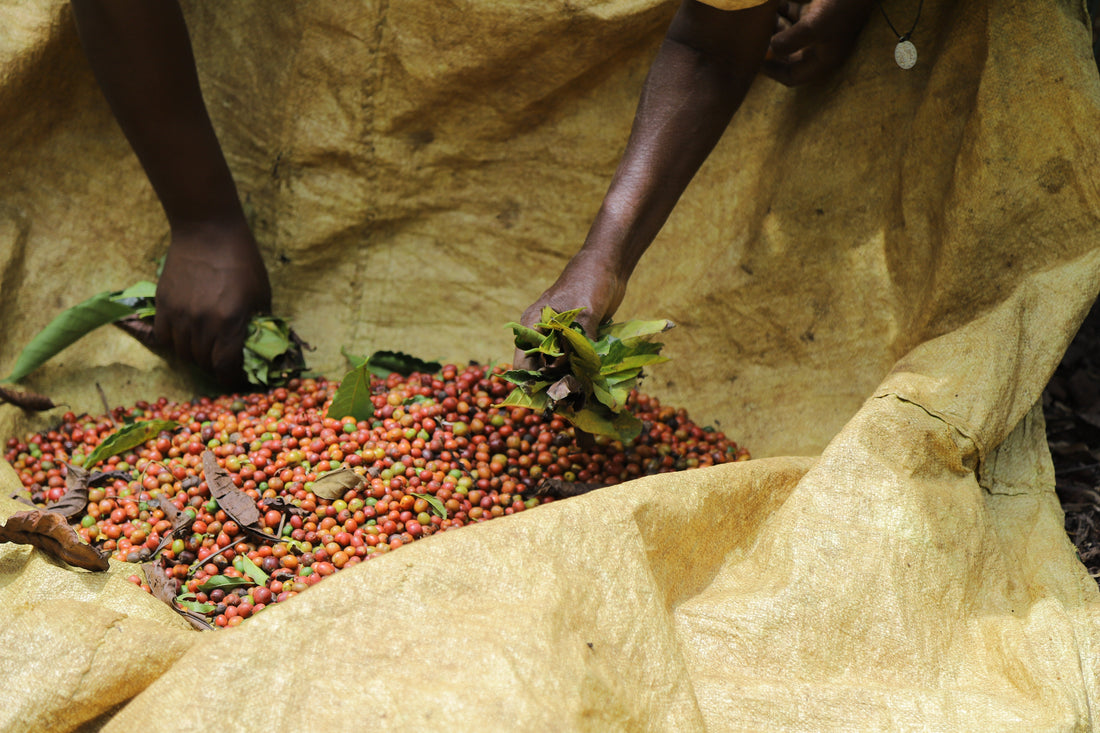It all started long ago...
The very first coffee European's discovered was Arabica.
The story of coffee as we know it was written there...
Coffee has two main species.
Arabica – the one everyone knows.
It’s on the shelves, on café menus, and stamped proudly on coffee bags.
And its cousin, Robusta – that most people don’t know exists.
Not because it isn’t drunk (it makes up almost half the world’s coffee), but because it’s almost never named.
For decades, Robusta has been hidden away in blends for body and strength – treated as the supporting act rather than the main feature.
It never got the same attention, development, or respect.
If you’ve been following us, you’ll know this is where we come in.
To understand why Robusta was overlooked, we need to go back to the start – to where coffee began.
Let’s go.
How Arabica rose
Coffee originated in East Africa (Ethiopia is often called its birthplace) and spread through Yemen – the first place it was farmed, traded, and shipped overseas.
Yemeni farmers cultivated Arabica, and it was Arabica that travelled first along the trade routes through the Middle East and into Europe.
It traded well: it was smooth, aromatic, and easy to drink.
By the 1600s, Europe had fallen for coffee (who can blame them?) – and Arabica was the only species it knew.
When European colonial powers began planting coffee across their territories – in Latin America, East Africa, and parts of Asia – they planted Arabica.
It thrived at higher altitudes and produced a gentler cup, closer to what European drinkers already loved.
So Arabica became the standard – the coffee that flavour charts, grading systems, and auction houses were built around.
Robusta wasn’t part of that story yet.
The star doesn’t always appear in the first act.
Enter Robusta
When Robusta finally entered the story, it did what it’s always done – it worked hard.
It grows at lower altitudes and in hotter, more humid climates.
It’s tougher, more resistant to disease, and naturally higher in caffeine.
It uses less land and water, and it can handle the heat.
But because it never entered the same trade systems, it was farmed for volume, not quality.
And that became the story: Arabica is premium. Robusta is cheap.
The world didn’t get to experience Robusta, done well.
And Robusta farmers earned prices that were far too low.
A myth that was rooted in trade, not taste or potential.
Why that story is changing
The world is slowly waking up to the other half of coffee.
Three big shifts are rewriting the story.
1. Climate.
Arabica is struggling. Rising temperatures, unpredictable rain, and new pests are making it harder to grow.
Many regions that produce Arabica today may not be able to by 2050.
2. Stability.
Arabica prices swing wildly – up one year, down the next.
For smallholders, that kind of uncertainty makes it hard to plan, invest, or even stay in farming.
3. Quality.
Farmers and roasters are discovering what we’ve believed all along: Robusta has its own potential.
When it’s grown, fermented, and roasted with care – it shines.
In 2024, the first-ever Robusta Flavour Wheel was released – a long-overdue moment that finally recognised what was always true: Robusta deserves to be judged on its own terms.
The next chapter
Robusta isn’t new.
But Robusta done well – specialty Robusta – is.
And it might just be the key to coffee’s future.
Not all coffees wear capes.
But this one should.
Try our 100% specialty Ugandan Robusta here.
It’s strong. It’s smooth. It’s farmer-owned.
And each pack buys two school meals in coffee-growing villages.



